김유자, 김춘미, 이성미, 조혜진, 최수앙
Kim Yuja, Kim Choonmi, Lee Sungmi, Jo Hyejin, Choi Xooang
Still Missing, Ilwoo Space, 2025. 4. 24 - 2025. 5. 23 curated by Kim Minyoung photo Park Mingu
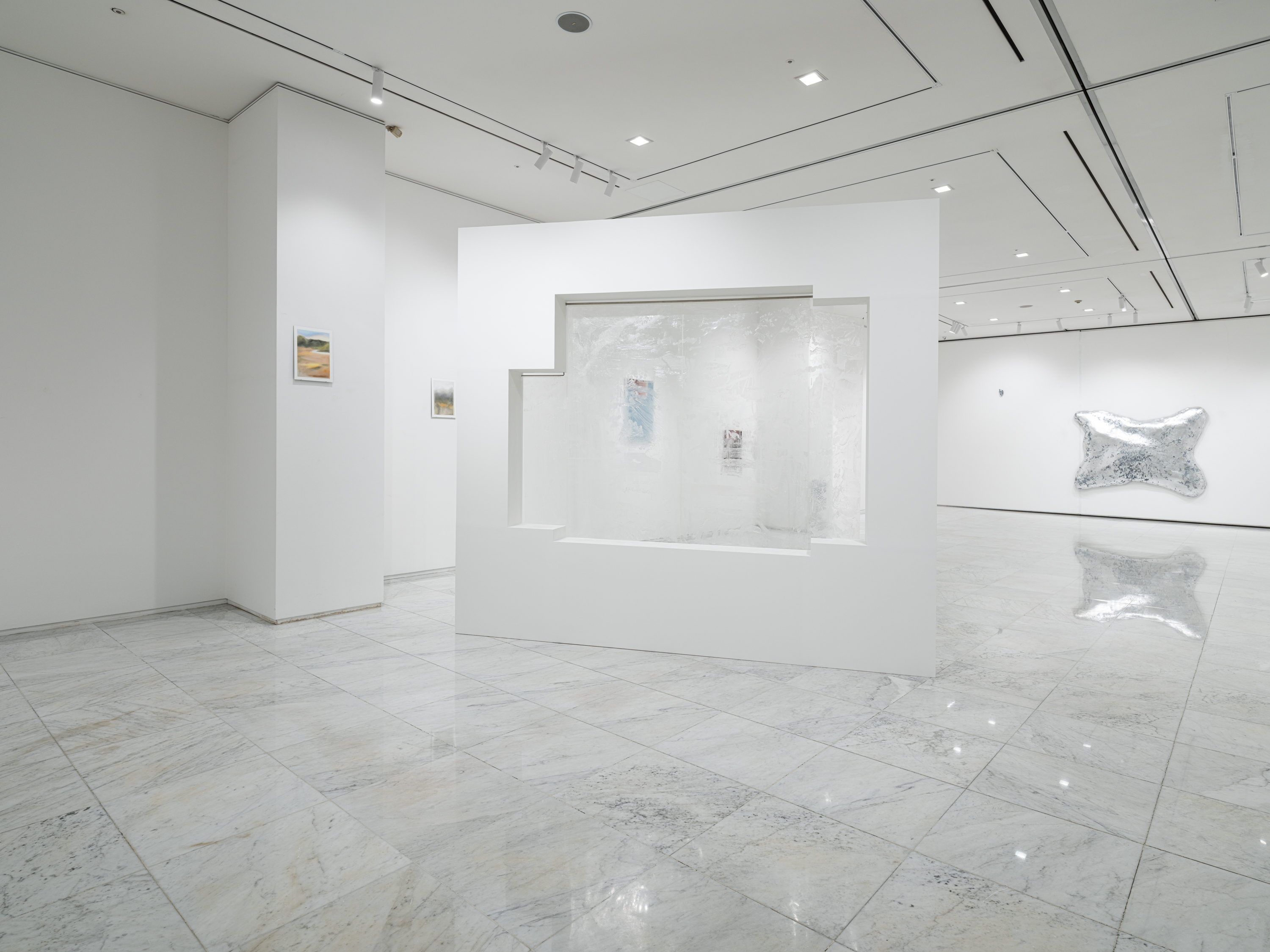
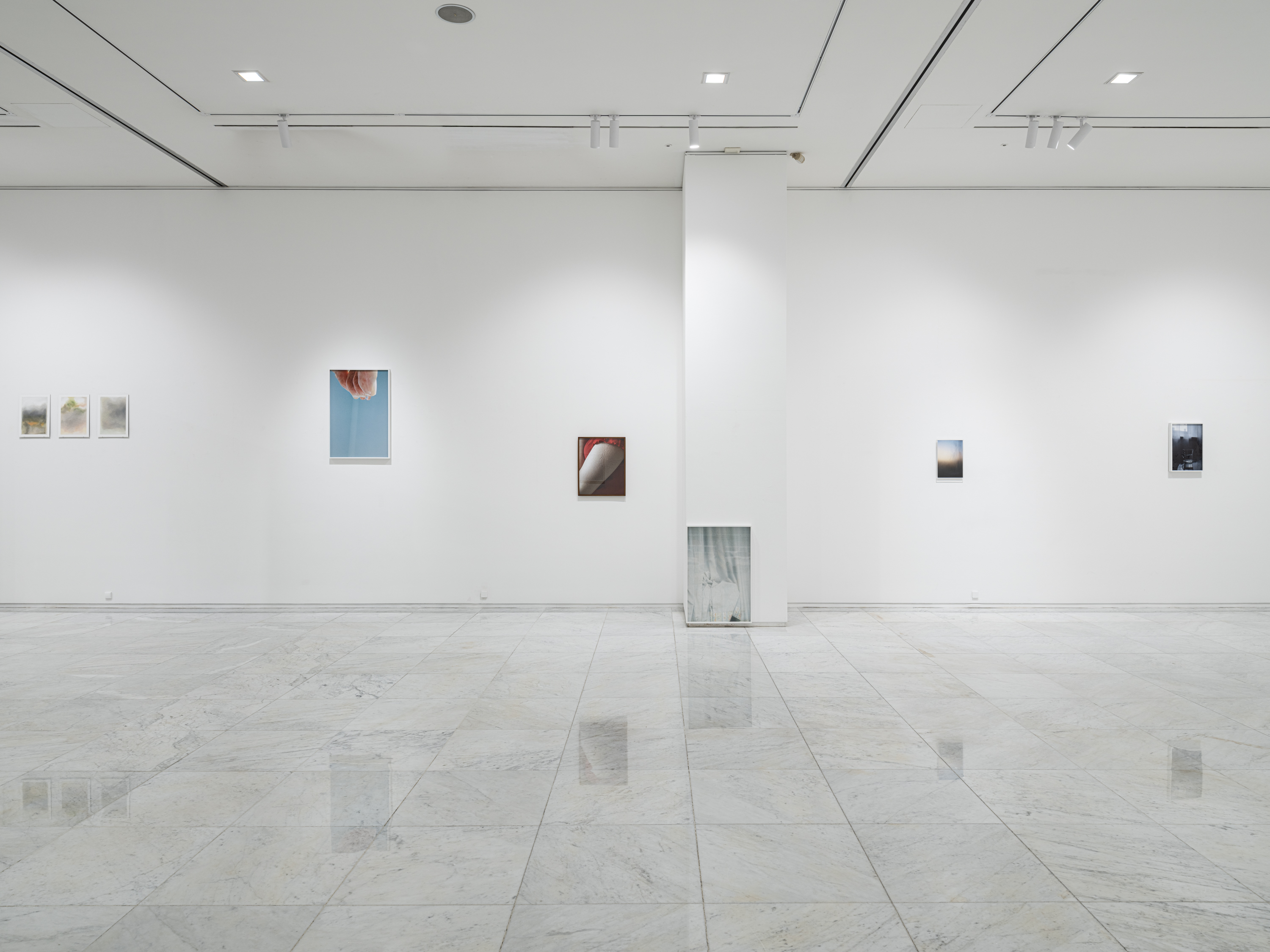
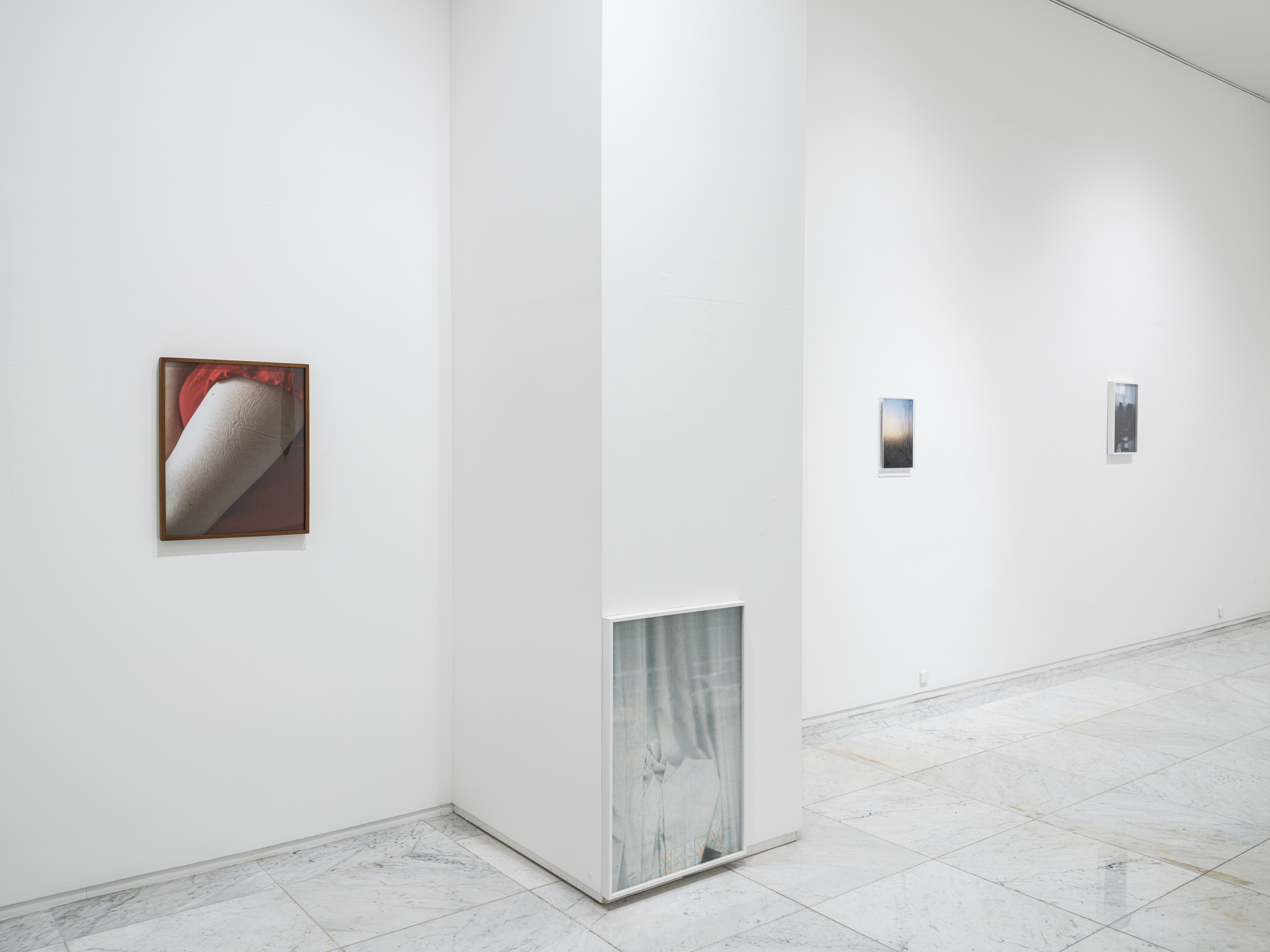
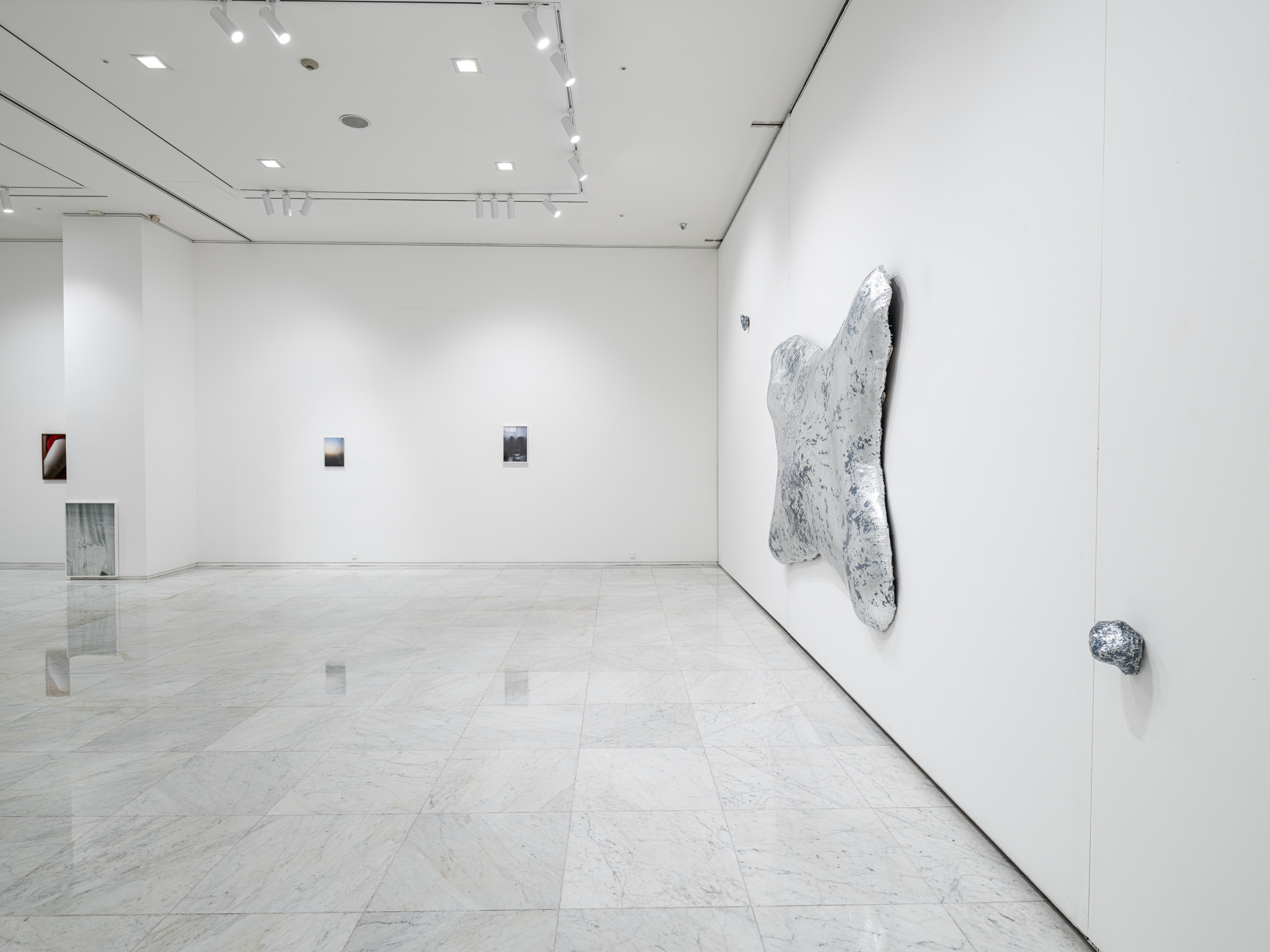
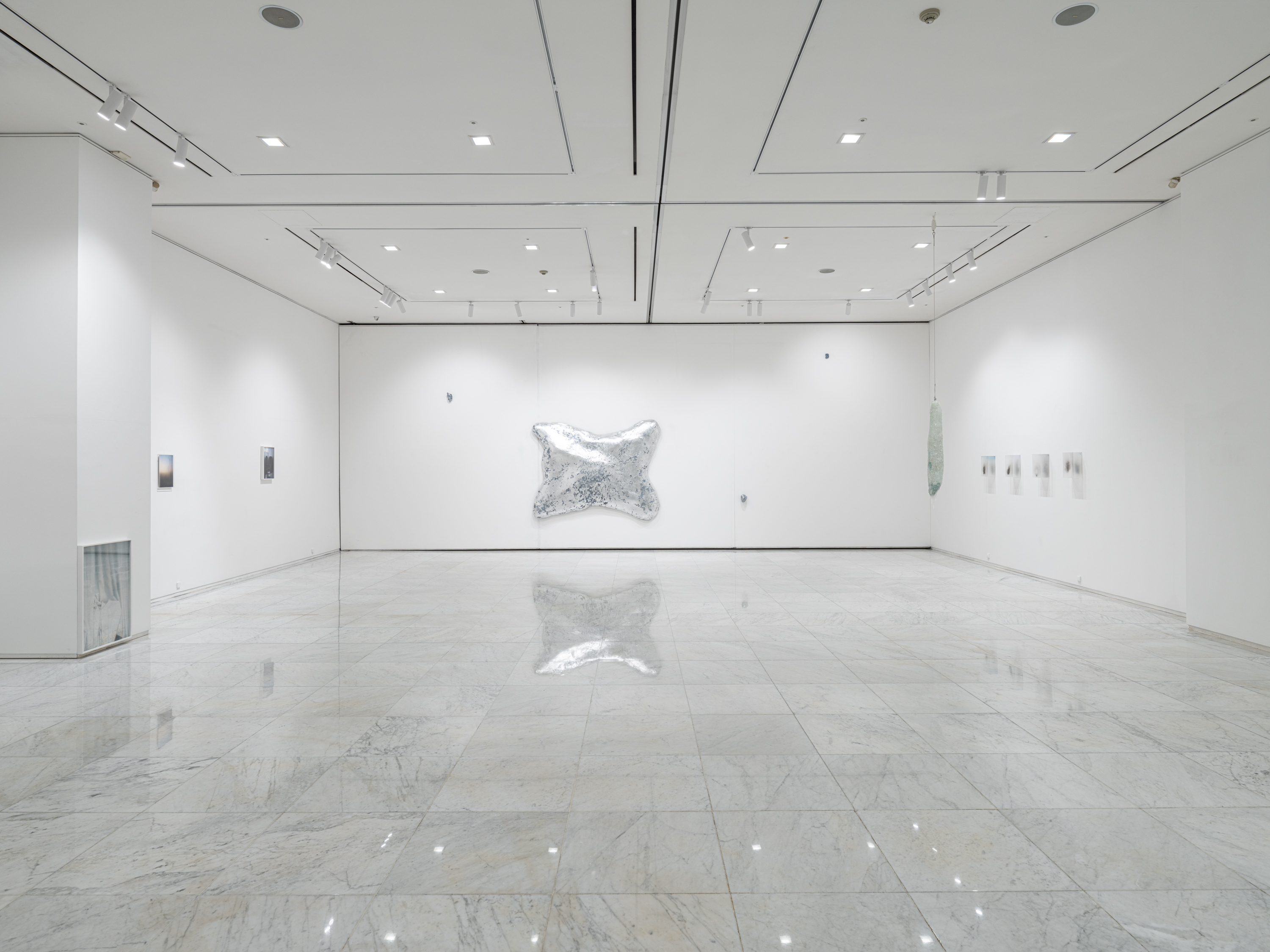
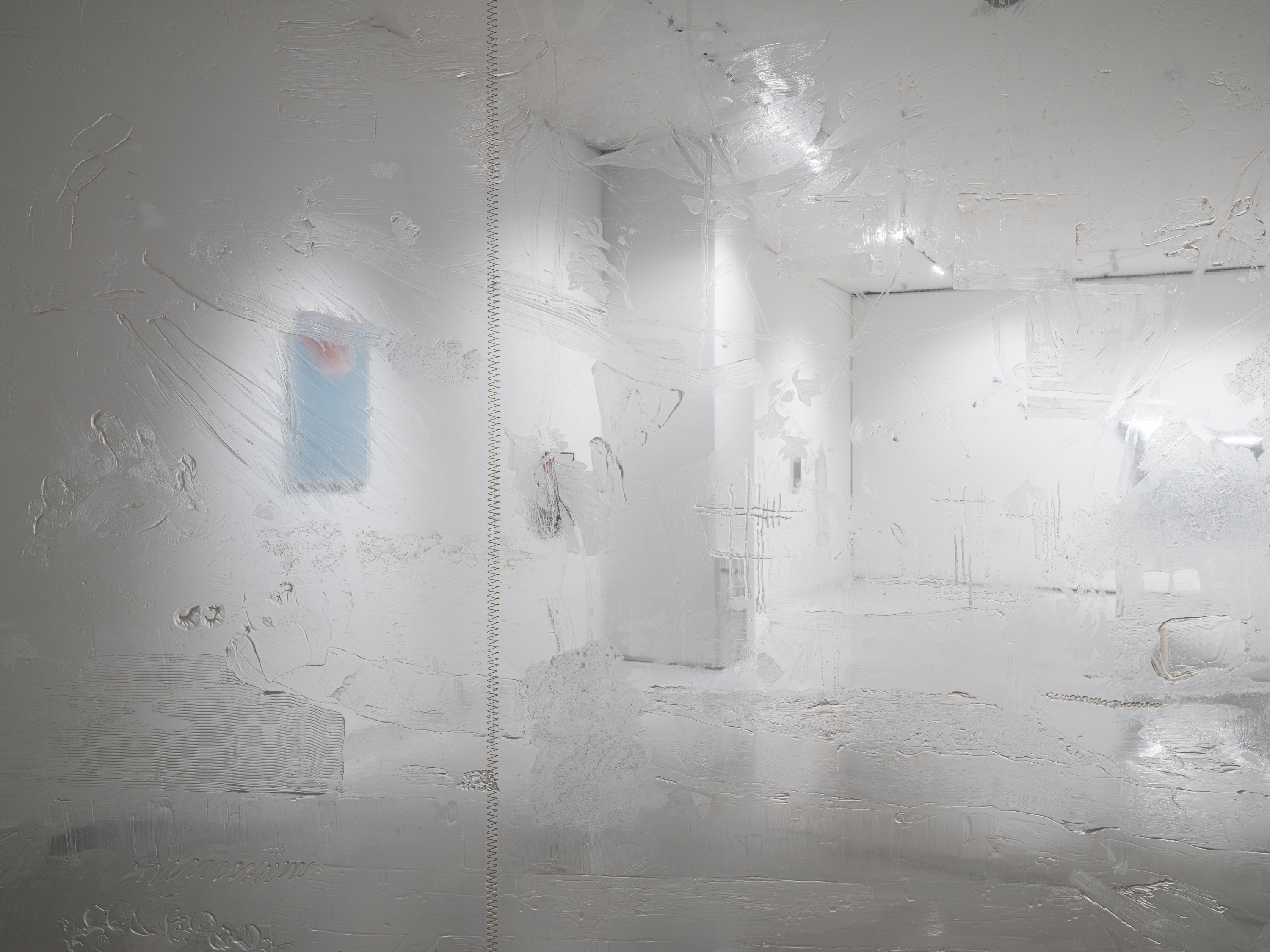
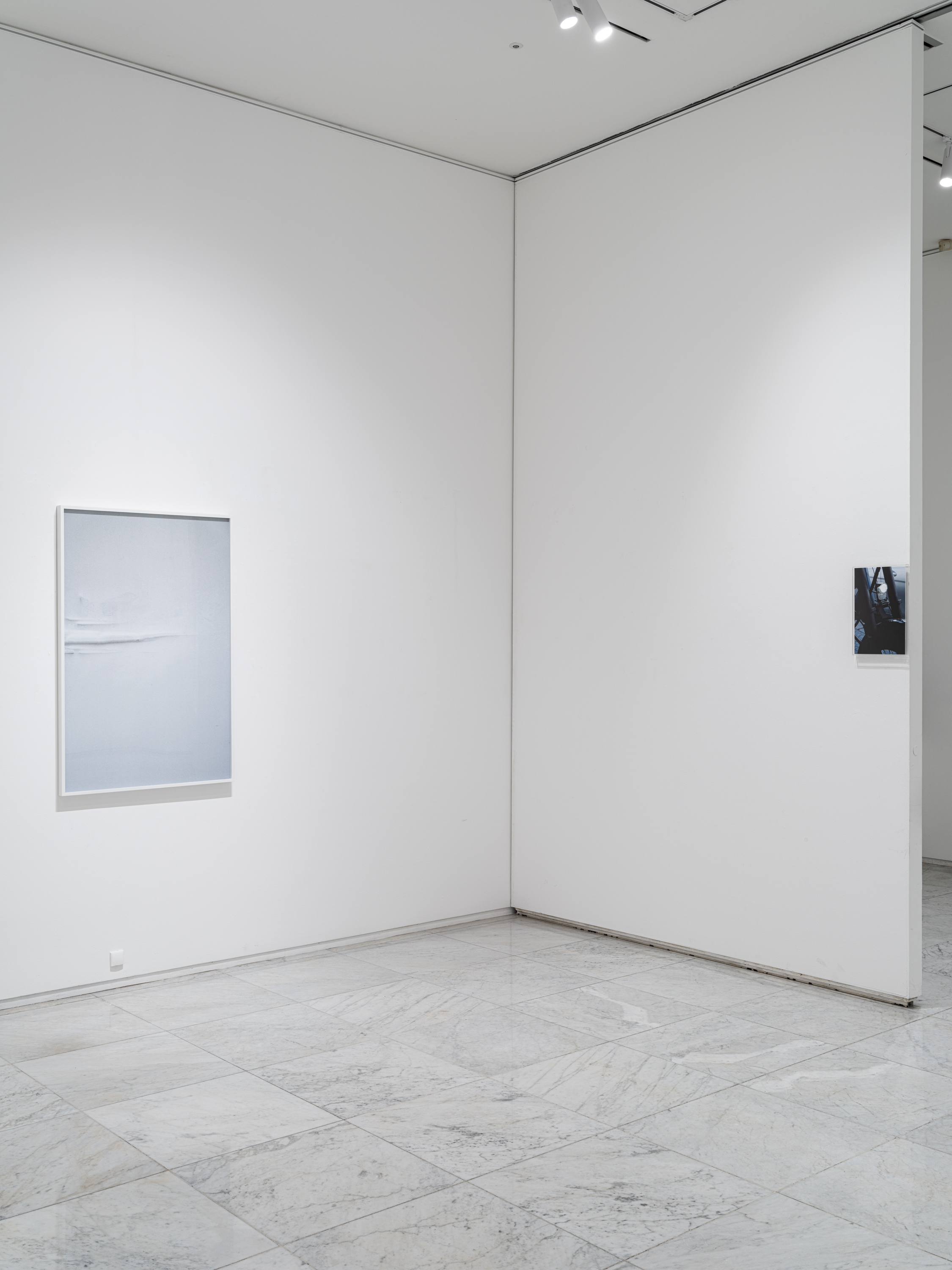
김민영
전시장에는 이미지의 파편들이 부표처럼 부유한다. 관람객은 그 부표들 사이를 지나갈 때 길을 잃은 것과 같은 감각을 체화하며 기억의 단서들을 마주하게 된다. 서체와 같은 필획의 추상 회화 맞은편에는 반투명한 막이 가로질러 있으며 그 막 너머로 보이는 실재와 환영 어딘가를 포착한 사진들은 안개 너머 희미하게 서 있다. 한편, 벽과 천장에 일없이 걸려 있는 신체를 닮은 사물들은 떠난 이의 일부 혹은 자취를 연상케 하며 기이함과 처연함을 자아낸다. 이곳에 있는 사물들은 한때 무언가가 있던 자리에 생긴 움푹 파인 흔적과 다름이 없다. 그리고 그 흔적들을 쫓다 보면 부재에서 기인한 그리움의 감각을 체험하게 된다. 그 순간 결코 닿을 수 없는 것에 대한 주체의 갈망은 관자의 현실에 스며든다. 물질의 형태로 변이된 지극히 사적이고 내밀한 정서가 존재 간 관계 맺기의 가능성을 탐색하게 만드는 것이다. 전시는 그리움에서 비롯된 영원한 결구를 상흔처럼 남기고, 보는 이에게 그 상흔들을 따라 다른 이의 세계로 기꺼이 진입하길 제안한다.
전시의 주제를 꽤 명징하게 지시하는 제목 ‘스틸 미씽 (Still Missing)’은 지오 카스트라노바의 사진집 명을 차용한 것이다. 잃어버린 반려동물을 찾는 전 세계의 수작업 포스터를 그러모은 이 책에는 반려동물 외에도 피닉스, 유니콘 등 한 때 우리에게 자리했었으나 지금은 잃어버린 상상의 존재들도 등장한다. 즉, 해당 사진집은 멀어져 버린 애착 대상과의 재회를 바라는 간절한 염원의 물질화라 할 수 있다. 본 전시의 작품들은 지난날 혹은 한 순간 자아를 사로잡았던 기억의 파편을 이미지로 포착한다는 점에서 카스트라노바의 프로젝트와 유사한 맥락을 취한다. 다만, 《Still Missing》의 대상은 조금 더 다양한 범주로 전개되며 시각적 양상 또한 더욱 파편화되어 있다. 5인의 아티스트들은 인식의 경계에서 미끄러지는 존재들—이미 사라졌거나 아직 도래하지 않은, 그러나 감각 속에 머무는 것들—을 불러내어 현실과 비현실 사이의 존재로 실체화한다.
이 전시는 가없는 거리를 좁히려는 제스처에 주목하려는 게 아니다. 또한 그 제스처가 사투와 같은 몸부림이었다면, 그러니까 기억의 그물망을 펼쳐 고스란히 지나간 시공과 존재를 길어 올리는 것이 목적이었다면 전시는 재현과 묘사로 점철됐을 것이다. 《Still Missing》의 아티스트들은 움켜잡기보다는 먼 곳에서 비롯된 어스름함을 부드럽게 쥐어보며 그리움과 갈망의 실체를 재구성한다. 불확실하고 흐릿한 것들로 아직 닿지 못한 존재들을 향해 문을 열어 놓으며. 그리고 수수께끼와 같은 장면으로 전환된 애달픈 마음을 마주한 관람객은 필연적으로 발화자와 대화를 시작하게 된다. 그것은 지나간 시간과 남겨진 시간의 교차이자 상실과 이해의 동시적 발생이라 할 수 있을 것이다. 전시 《Still Missing》은 존재 및 시간과의 어쩔 수 없는 거리감으로 인해 촉발된 그리움과 갈망의 애수를 이야기할 뿐 아니라, 요원한 형상들로 펼쳐진 개인의 ‘여전히 그리운 것들’ 이 타자와 도킹하여 세계 속 삶의 끈들로 엮여나가는 지점을 주목하고자 한다.
김유자는 자신과 주변인이 겪은 이야기들의 이분법적 경계가 흐려지는 지점을 사진 매체로 시각화한다. 그는 과거와 현재, 실존과 이탈 등 흔히 분절된 개념이라 여기는 것들의 선을 지우며 이를 하나이면서 둘이자 둘이면서 하나인 모호한 존재로 여긴다. 그래서 작가의 사진은 실재했던 순간의 물질화임에도 현실의 흐름에서 벗어난 것 같다. 이번 전시에서 김유자는 익숙한 시선으로는 보이지 않지만 감각하려는 순 낯설게 현실에 스며드는 장면들인 <Frankie> 시리즈를 선보인다. <Frankie>라는 제목은 미국의 커뮤니티 사이트에서 발견한 짧은 이야기를 인용한 것으로, 상상의 친구와의 만남 및 이별을 겪은 한 아이의 유년기 과정을 다루고 있다. 아이는 처음에 프랭키와 친밀했지만 후에 그 존재가 삶 깊숙이 들어오면서 겪는 불편함 때문에 그를 외면하고 끝내 프랭키는 사라지게 된다. 작가는 현실에서 사람들이 생경한 존재를 만날 때의 태도 또한 이와 다르지 않다고 생각했으며, 오랫동안 이어진 자신의 악몽과 그로 인해 몸에 새겨진 일시적 흔적을 조금은 다른 시선으로 실체화한다. 하얀 벽 위에 출몰했다 소멸하는 수상한 결, 유리컵 그림자에 매달린 혜성의 꼬리 같은 물 자국, 팔에 남은 곧 사라질 천 주름의 흔적 등 김유자는 불분명하며 유한한 것들에서 발견되는 꿈과 현실의 경계, 존재와 부재의 중첩을 온기의 감각으로 기록한다. 작가는 그 연약한 장면들을 무대 위로 호명하듯 전면에 내세우지 않는다. 그저 괄호 안의 희미함 자체를 조명하며 그들을 조용히 바라본다. 흥미로운 점은 불분명한 지시체로
인해 개인적 경험의 집결인 <Frankie>들은 곧 모두의 장면으로 전치된다는 것이다. 아마 그것은 경계 밖의 세계를 더듬어보는 작가의 다정한 상상으로부터 기인했으리라. 보이지 않는 장면, 가려진 장면에 대한 관심에서 비롯된 김유자의 사진은 타자의 몸 어딘가 오목한 곳에 고이며 또 다른 서사를 만들어 간다.
Kim Minyoung
The axis of nostalgia, the time of longing, tilts
toward the past. However, it is projected in
the present. In this sense, longing can be said
to nullify linear time. It is akin to anchoring
oneself in the past, in the time and existence
that have passed, or the act of calling them
back to the here and now. Thus, the practice
of longing is poignant. The exhibition Still
Missing seeks to interpret the artistic attempts
to reconstruct presences and times that,
though not present here, haunt the self like
ghosts, as the pain of longing. As the word “longing” suggests, it is filled with endless
distances. Therefore, the desire to make
visible the faded remnants of things lost, or
those that are still out of reach, can be seen as stemming from an insatiable hunger. This
exhibition attempts to connect the in-between
space, where past and present, presence and
absence coexist, and the broad narratives
derived from it.In the exhibition space, fragments of images float like buoys. As the viewers pass between these buoys, they embody a sense of having lost their way. Opposite the abstract strokes, akin to those found in typography, a semi- transparent screen crosses the space. Through it, photographs capturing a reality and illusion somewhere beyond appear faintly, like through fog. Meanwhile, objects resembling bodies, casually hung on walls and ceilings, evoke memories of those who have departed, or traces of their presence, creating a sense of strangeness and pathos. The objects here are no different from the indented traces left in places where something once existed. Following the traces of these marks, one encounters an unknown door leading to the other. Opening the door to uncertainty and mystery is not an easy task. Yet, we embark on adventures only after losing our way, and in that moment, the scope of life becomes infinite. The exhibition leaves behind an eternal scar created from longing and suggests to the viewer that they willingly step into the world of the other by following these scars.
The title of the exhibition, Still Missing, clearly indicates its theme and borrows the title of a photography book by Gio Castranova. This book collects hand-made posters from around the world about missing pets, but it also features mythical creatures such as the phoenix and unicorn—beings that once had a place in our lives but are now lost. In other words, the book can be seen as a materialization of the desperate longing to reunite with a lost attachment. The artists of this exhibition share a similar context with Castranova’s project, in that they capture the fragments of memories that once captivated them or a fleeting moment, in the form of images. However, Still Missing expands its subject matter into a broader range and adopts more fragmented forms. The five artists summon those at the boundary between the real and the unreal—the ones that have already disappeared or have not yet arrived, but remain within the realm of sensation.
This exhibition does not focus on gestures meant to close an infinite distance. Moreover, had these gestures been struggles like desperate fights—attempts to unfurl the web of memory and dredge up the past in its entirety—then the exhibition would have been marked by representation and description. The artists of Still Missing do not seek to grasp; rather, they gently hold the dimness that originates from afar, reconstructing the substance of longing and desire. The artists open the door to those elusive presences, still out of reach, made up of uncertain and blurry things. Upon encountering this aching heart transformed into a scene of mystery, the viewer inevitably begins a conversation with the expressor. This can be understood as the intersection of past and present, the simultaneous emergence of loss and understanding. The exhibition Still Missing not only explores the multilayered nature of longing and desire, triggered by the unavoidable distance between existence and time, but also focuses on the point where an individual’s “still missed-for things”—unfolded through elusive forms—dock with the other, intertwining with the threads of life within the world.
Kim Yuja visualizes the point where the dichotomous boundaries of the stories experienced by herself and those around her blur, using the photographic medium. She erases the lines between concepts commonly seen as fragmented, such as past and present, existence and escape, viewing them instead as ambiguous entities that are both one and two, and two and one. Thus, her photographs, though materializations of real moments, seem to deviate from the flow of reality. In this exhibition, Kim presents Frankie series, which consists of scenes that do not appear through a familiar gaze, but, when attempted to be sensed, they strangely seep into reality. The title Frankie is borrowed from a short story found on an American community site, which deals with a child’s process of meeting and parting with an imaginary friend. Initially close to Frankie, the child later turns away from him due to the discomfort of his presence becoming too ingrained in life, and ultimately, Frankie disappears. The artist thoughts that people’s attitudes toward unfamiliar beings in reality are no different, and she materializes her long-standing nightmares and the temporary traces they left on her body from a slightly different perspective. On a white wall, mysterious threads that appear and disappear, water marks resembling the tail of a comet hanging on the shadow of a glass cup, traces of fabric wrinkles on the arm that will soon vanish—Kim Yuja records the boundary between dream and reality, and the overlap of presence and absence, in the warmth of sensation, found in unclear and fleeting things. The artist does not present these fragile scenes boldly on the stage but rather illuminates the faintness within parentheses and quietly observes them. What is intriguing is that, due to the ambiguous indicatives, Frankie series, which is a collection of personal experiences, is transformed into a scene for everyone. This likely stems from the artist’s tender imagination of exploring the world beyond boundaries. Kim Yuja’s photographs, stemming from an interest in invisible and hidden scenes, gather in a concave space somewhere on another’s body, creating another narrative.